Here at Bikeradar, we’re lucky enough to ride many of the latest and (sometimes) greatest mountain bikes in the world. From all this experience, we’ve learned a thing or two about what works and what’s changed, so can make some educated guesses about where bikes are headed.
We’ve extrapolated the current trends and, with a little creative license, have taken them to their logical conclusion. We’ve applied this perverse logic to every aspect of the bike to make a half-silly, half-serious prediction about what the ultimate bike of the future might look like.
The result is a hodgepodge of all the latest technologies and ideas that the MTB industry has cooked up. Best of all, it’s been realised for us in pixels by the very talented Daniel Gunnarsson — the man behind Local Bike Chop, which we featured recently.
- This guy is drawing the bikes of the future and we like what we see
- Road bikes 2019: the future of road cycling
It’s our very own Frankenstein’s monster and we’re very proud of it.
We realise that the aesthetics are — erm — different. So before you turn the comments section into the online equivalent of a pitchfork-wielding mob, let us explain our reasoning behind our creation and its unusual design features.
BikeRadar's mountain bike of the future
We've designed the mountain bike of the future
The future of mountain bike geometry
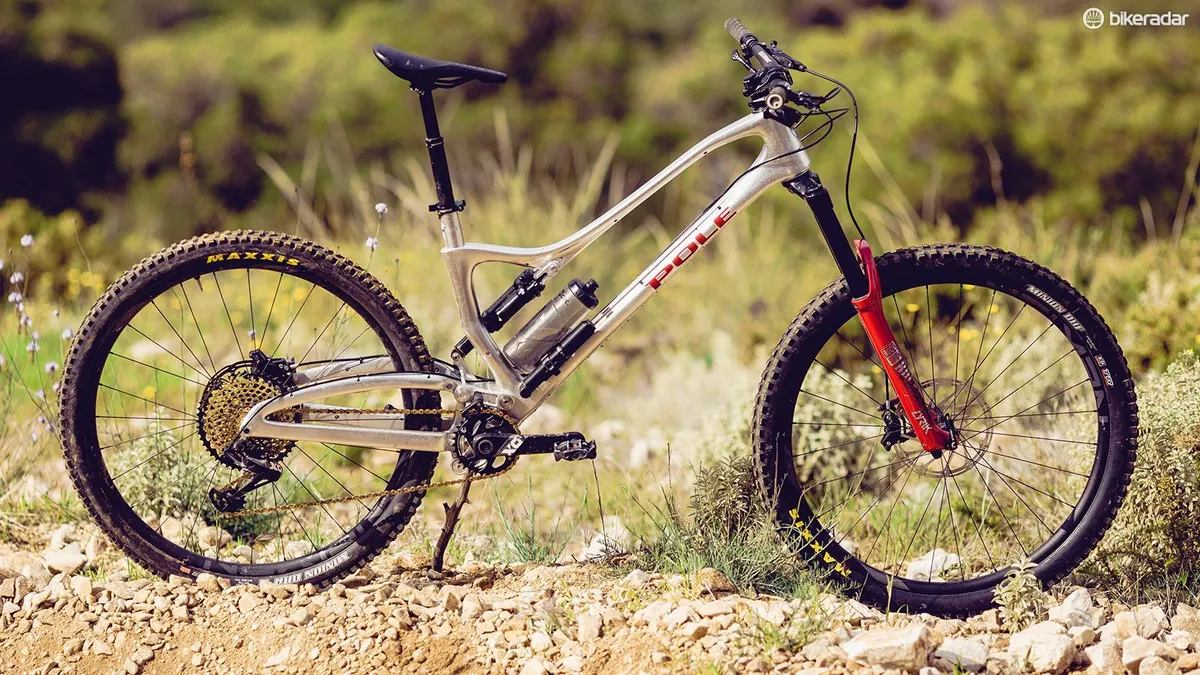
Mountain bikes are getting longer. That’s not just the current fashion, it’s a trend which has been steadily advancing since the sport was invented.
In our opinion, it’s the single most important reason modern bikes are easier, faster and safer to ride than those of a few years ago.
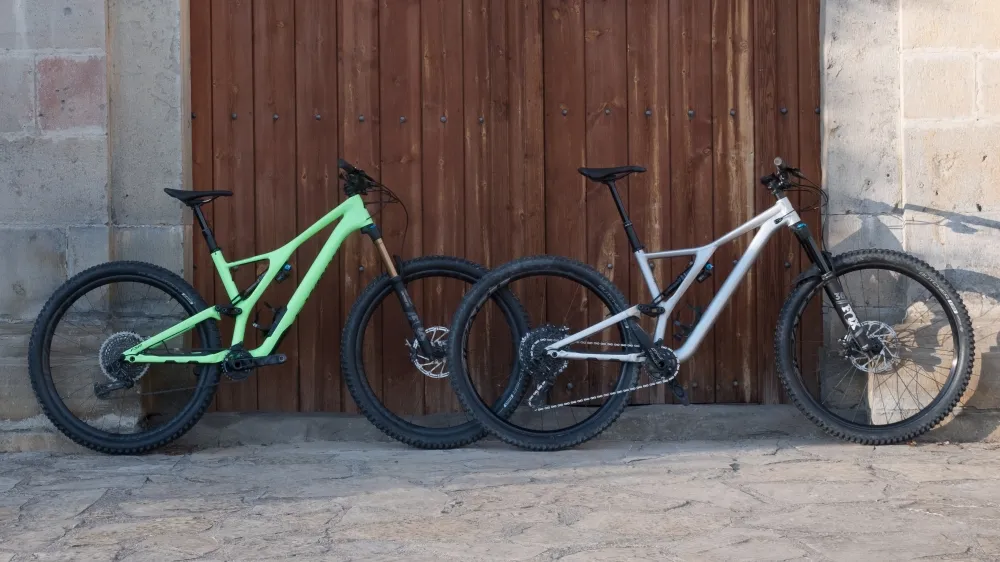
Outliers, such as Pole and Nicolai, have already taken this trend to its logical conclusion. We’re unlikely to see bikes much longer than their 1,300mm+ wheelbases, but Transition, with its 'SBG' geometry, and Specialized, with its Stumpjumper EVO, are already making long and slack the mainstream.
While long and slack geometry isn’t for everyone, we’ve yet to find anyone who doesn’t like a steep seat angle on a full-suspension bike
Our prediction is that bikes will continue to get longer, and perhaps some bigger brands will approach Pole/Nicolai proportions. So that’s where our bike of the future gets its geometric inspiration.
What’s more, sizing will be better suited to riders of extreme heights, with chainstay lengths increasing with frame size (something which Norco pioneered), as well as reach and stack. Overall, bike geometry will be more proportionate to rider height.
The seat tube will be very short to minimise standover. The electronically-controlled dropper post will have up to 200mm of travel.
Finally, the bike of the future will have a seat angle of 80 degrees. While long and slack geometry isn’t for everyone, we’ve yet to find anyone who doesn’t like a steep seat angle on a full-suspension bike, nor a bike which doesn’t climb better with the saddle slammed forwards on the seatpost.
Goodbye derailleurs — the mountain bike drivetrain of the future
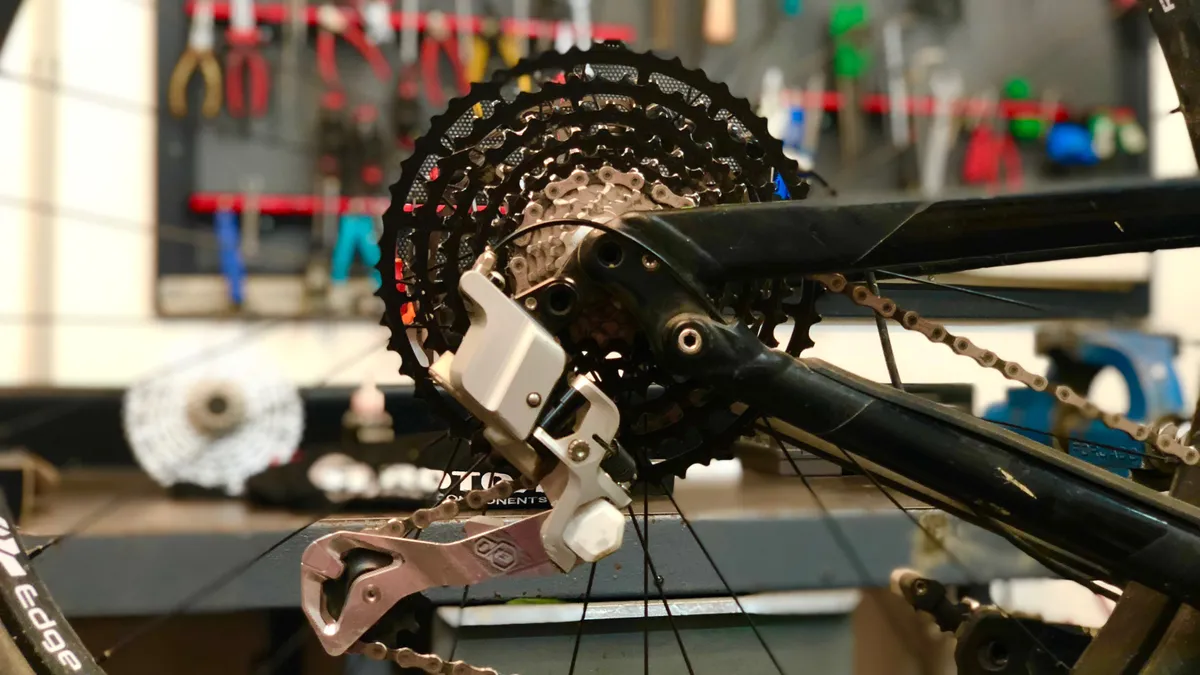
It wasn’t long ago that we all got very excited about 10-speed drivetrains, which had just about enough range to manage a single-ring setup (if your knees were up to it).
Soon after, 11-speed came along which, in SRAM’s case, was specifically designed for a single front chainring. Not long after that, SRAM and then Shimano unveiled 12-speed drivetrains, and then Rotor announced a 13-speed system.
What’s the logical conclusion of this trend? Infinite gears!
Continuously variable transmission (or CVT) is used in some cars. It allows the gearing to be adjusted infinitesimally, rather than in discrete jumps. In a car, this allows the engine to stay at its optimum RPM while the vehicle accelerates by constantly changing the gear ratio.
If this system was installed in a bike, you could have a very broad range of gearing without having to worry about large gaps between gears. What’s more, with electronics you could set it to automatically adjust the gear ratio to maintain your preferred cadence at any speed. That way you’d always be in exactly the right gear.
Such a system (sort of) already exists for bikes in the form of the Nuvinci hub.
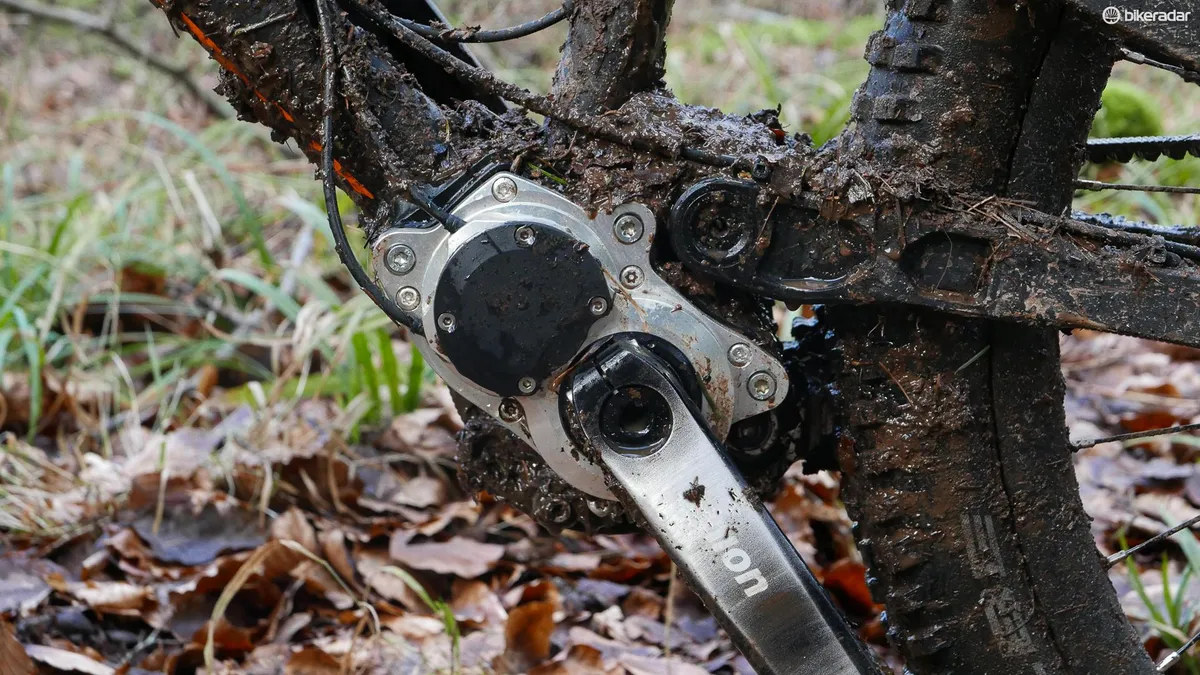
The ideal bike wouldn’t have a derailleur on the rear wheel. Internal gears are not only less vulnerable and easier to keep lubricated, but also put the weight of the gearing in the frame rather than on the wheel.
Making the wheel lighter and the frame heavier makes the suspension quicker to react, improving traction and comfort.
Modern gearboxes offer this advantage too, but their intermeshing cogs make them heavy and inefficient. Worse still, it’s impossible to change gear while pedalling hard, which is frustrating when sprinting towards a gap jump or technical climbing feature.
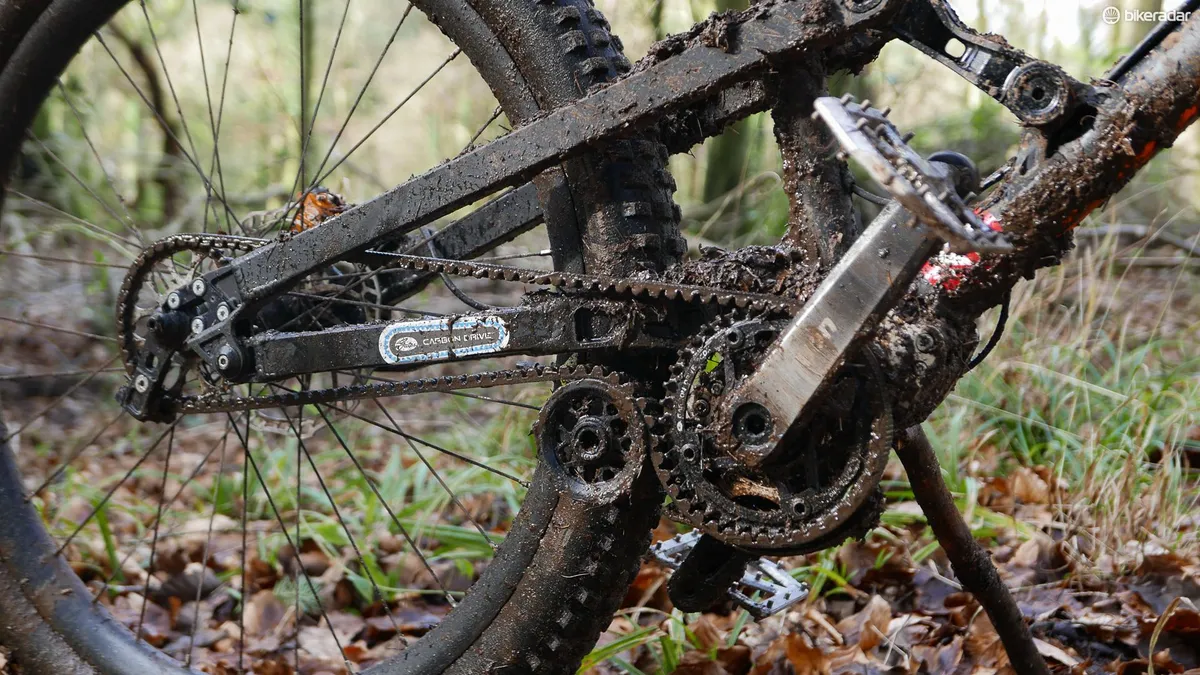
Our bike’s internal CVT transmission could solve this problem. Together with a belt connecting it to the rear wheel, this should mean virtually zero maintenance, as well as infinite gearing options and better suspension performance.
Linkage fork
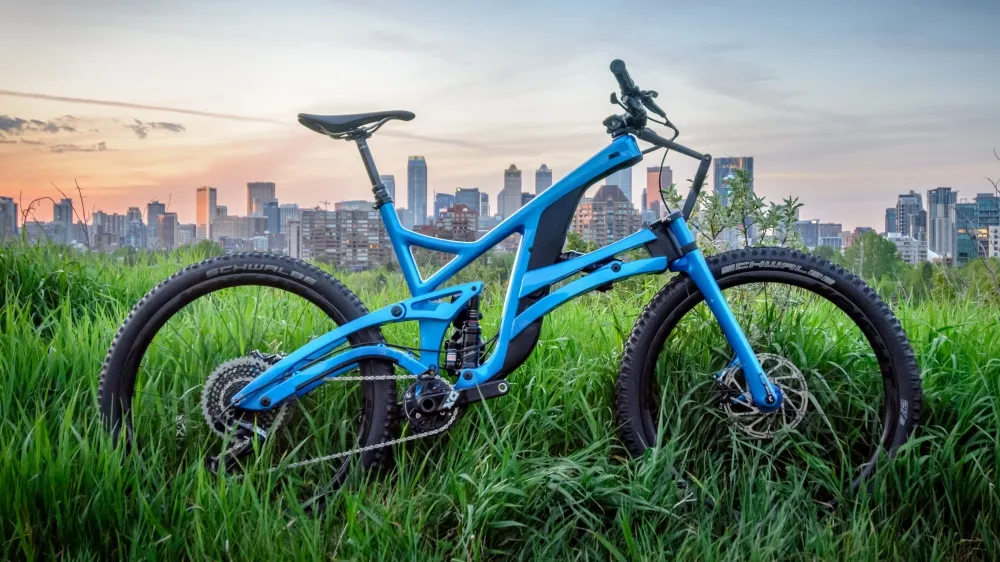
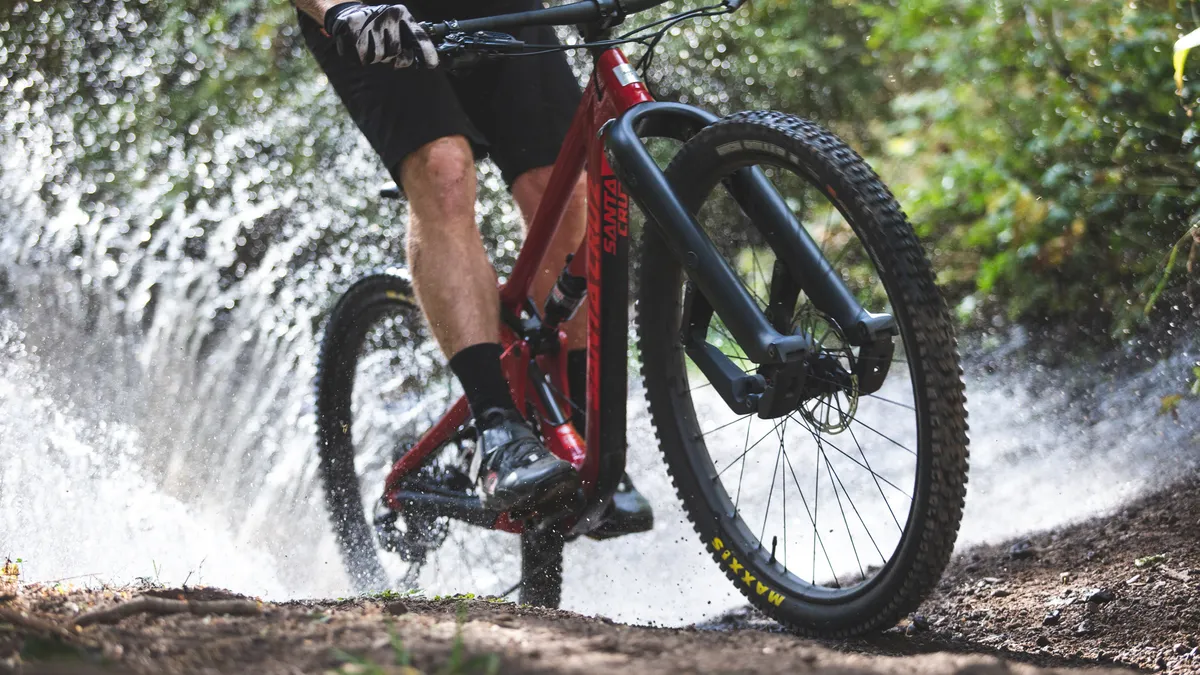
Perhaps the most striking thing about our creation is that linkage fork. It’s inspired by (okay, copied from) a prototype bike, the Structure SCW1. More recently, two modular (interchangeable with a conventional fork) linkage forks have been unveiled by Motion France and Trust Performance.
Linkage forks have yet to prove themselves in the real world, but like many other ideas on this bike, they make a lot of sense in theory, if not in practice
This is a bit speculative on our part, as we haven’t ridden any of these forks yet (at time of writing), and the last linkage fork anyone at BikeRadar rode was on the Whyte PRST-1, which was a bit, shall we say, terrible.
However, linkage forks can have a few theoretical advantages over telescopic forks. For starters, because they pivot on bearings rather than sliding on structural stanchions, friction can be greatly reduced.
Unlike telescopic forks, linkage suspension is not constrained to move in a straight line parallel to the head angle. This means a linkage fork can have a decreasing fork offset or slackening head angle as the suspension compresses.
This helps maintain or increase the steering stability (trail) as the fork dives under braking, rather than decreasing like a telescopic fork.
Finally, linkage forks can use braking torque to resist brake dive, so the fork stays higher in its travel under heavy braking.
Linkage forks have yet to prove themselves in the real world, but like many other ideas on this bike, they make a lot of sense in theory, if not in practice.
Rear suspension
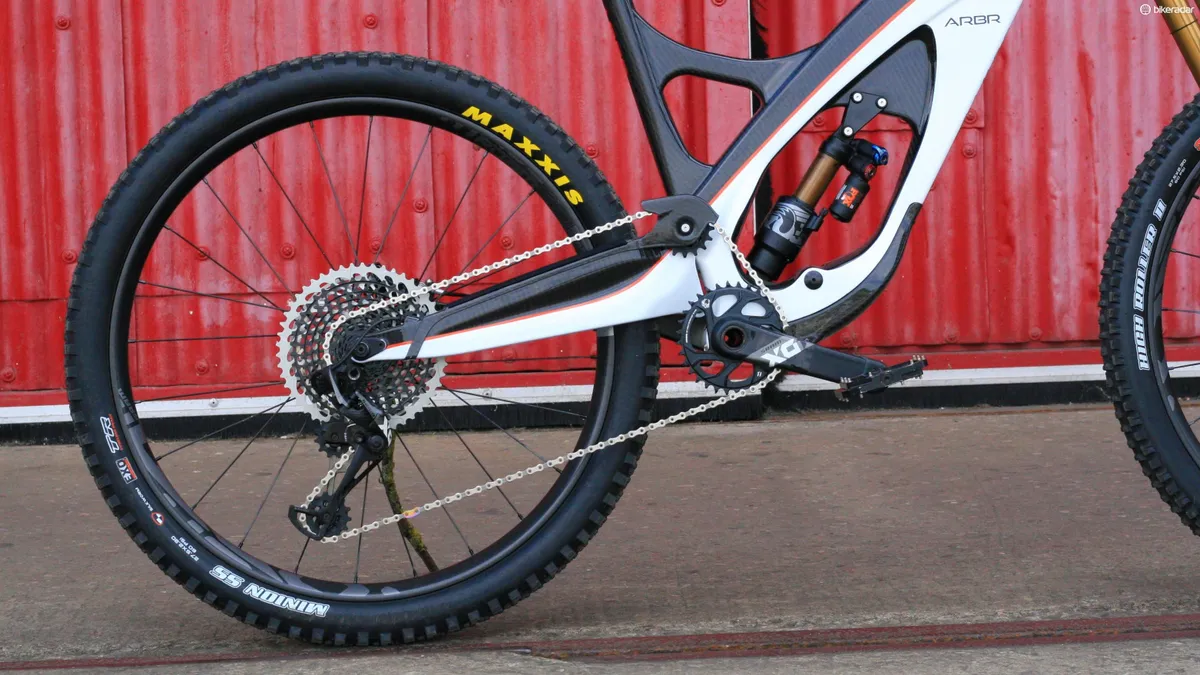
In contrast, the rear suspension uses a design which has proven effective at the highest level. Amaury Pierron won the 2018 downhill World Cup overall on a Commencal Supreme using a similar design.
It’s a high-pivot suspension layout, which creates a rearward axle path. This helps with absorbing large bumps, and also stops the rear suspension from squatting into travel when pedalling.
An idler wheel loops the belt up close to the main pivot, greatly reducing pedal-kickback for a smoother ride.
E-bike mode
E-bikes remain a contentious yet fast-growing branch (or offshoot) of mountain biking. But what if, like us, you like riding both electric and conventional bikes, and don’t want to own two separate bikes?
Our idea is a modular battery and motor, which can be installed and removed easily. That way you can have a normal bike for racing, riding with e-sceptics, or for the honest satisfaction of riding under your own power. Then quickly turn it into an e-bike to double your lunch-hour laps.
Integrated everything
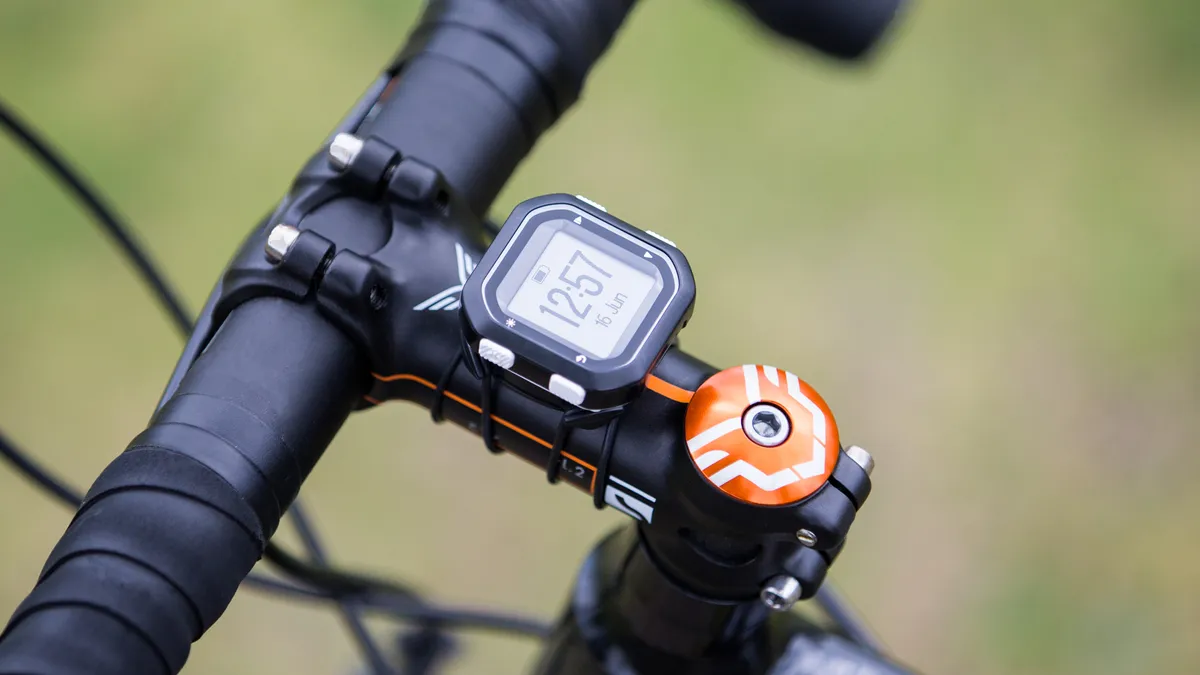
You’d be pretty disappointed if you bought a car for several thousand pounds/dollars/euros only to find the lights and dashboard had to be fixed on with elastic bands, Velcro and zip-ties.
That’s why our dream bike has integrated LED lighting and a head-up display built into the handlebar. This shows everything a good GPS would: speed, power, battery condition, as well as tyre pressures and other data.
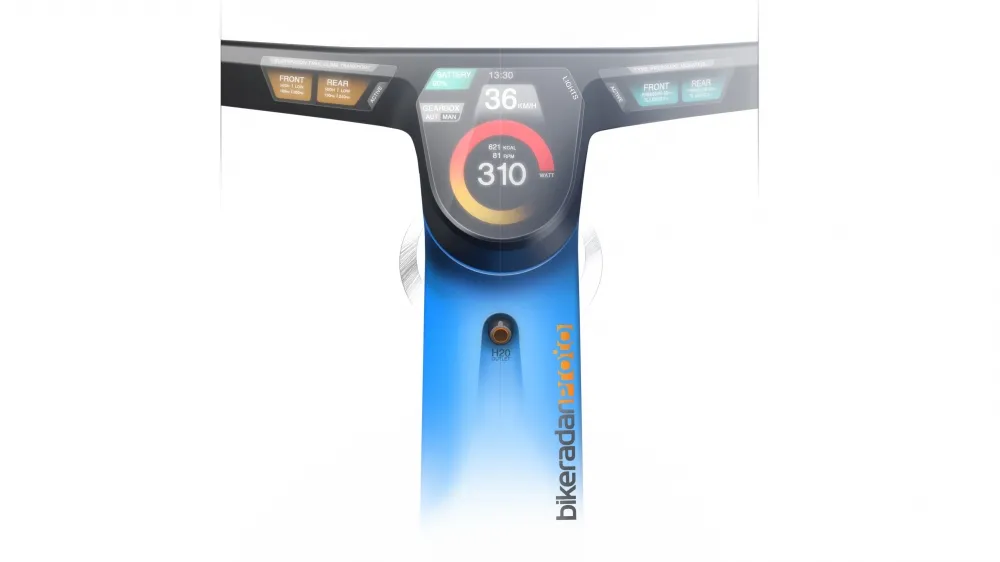
It’s also a touchscreen. So e-bike modes, lights, transmission settings etc. can be adjusted on the fly.
Mountain bikers are increasingly precious about being able to mount a water bottle inside the frame, and we’re no different. But even water bottles mounted above the down tube can get muddy or fall out, and they’re difficult to use while riding.
To solve this, we’ve taken inspiration from triathlon bikes. A bladder inside the frame tubes holds drinking water, with a straw on the top tube to drink it while riding. This not only solves the water bottle problems but also makes room inside the mainframe for the removable battery.
Wheels and tyres
Front and rear wheels do different jobs. We’ve broken more rear wheels than front several times over because they take a lot more abuse. Like Crankbrothers’ Synthesis wheelset (and some others), our bike’s rear wheel will have more spokes and a stronger rim.
Not only that, but the rear wheel will be 27.5in whole the front will be 29in. We’re not saying mismatched wheels offer any inherent handling benefit (unless fitting a smaller wheel to slacken the head angle and lower the bottom bracket height), but it does improve the strength of the rear wheel and allow shorter riders to ride off the back of the bike.
Mostly though, it just looks cool. And with the recent relaxing of the UCI’s ban on mismatched wheel sizes we may see world cup downhillers using this setup in the future.
Like Canyon’s Spectral:ON, the rear tyre will also be larger than the front — 2.8in and 2.6in respectively — for better rear-wheel compliance and steering precision.
What do you think of our creation? What aspects do you agree with or disagree with? Let us know in the comments below.
